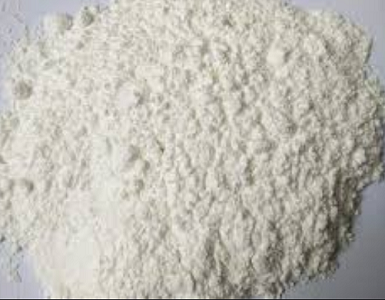Background and overview[1]
Bifenthrin is one of the new pyrethroid agricultural insecticides that developed rapidly in the 1970s and 1980s and is widely used in countries around the world. Bifenthrin is moderately toxic to humans and animals. It has high affinity in soil and high insecticidal activity. It has stomach poisoning and contact killing effects on insects. It is used on a variety of crops to control aphids, Mites, cotton bollworms, pink bollworms, peach heartworms, leafhoppers and other pests. Bifenthrin acts quickly, has a long lasting effect and has a broad insecticidal spectrum. A U.S. patent discloses a method for preparing bifenthrin using trifluthrin and biphenyl alcohol in the presence of pyridine as an acid-binding agent. The main problem in the reaction is that pyridine, which is highly toxic and has an unpleasant odor, is used as the acid-binding agent. , and use low boiling point methylene chloride as the reaction medium, so that there will be residual pyridine in the production wastewater, which increases the difficulty and workload of wastewater treatment; the treated wastewater will inevitably contain high ammonia nitrogen and cannot reach required emission standards.

Apply[2]
Bifenthrin is processed into emulsifiable concentrates, wettable powders, suspensions and other dosage forms for use. Mainly used for cotton, tea trees, fruit trees, vegetables, cereals and other crops to prevent and control various aphids, cotton bollworms, pink bollworms, tea loopers, tea caterpillars, tea green leafhoppers, fruit tree heartworms, citrus leaf miners, cabbage caterpillars , Cabbage Spodoptera exigua, etc. It can also treat mites. Because the effect is unstable and drug resistance is easy to develop, it is not used as a special acaricide. The spray should be uniform. For boring pests, the pesticide should be applied before the larvae penetrate the crops. The residual period is generally 7 to 15 days.
Preparation[1, 3]
Method 1: Pump 400 kilograms of toluene into a 1000-liter glass-lined reactor, add 97.1 kilograms of kung fu acid, 79.3 kilograms of diphenyl alcohol and 2 kilograms of trimethylsilyl magnesium oxide under stirring. Steam was introduced into the jacket, the temperature was raised to 60°C, and the reaction was carried out for 8 hours. The high-performance liquid chromatography central control detected that the biphenyl alcohol content in the reaction solution was less than 0.1%. The jacket drains the steam and flows in cooling water to cool down to the temperature of the reaction solution of about 20°C. The reaction solution is transferred to the water washing kettle, washed with 2 × 200 kg of water, and layered for half an hour. The water in the lower layer is combined and sent to wastewater treatment, and the toluene layer in the upper layer is transferred into In the concentration kettle, concentrate and remove to dryness under reduced pressure to obtain 159 kilograms of bifenthrin. High-performance liquid chromatography (HPLC) showed that the bifenthrin content was 99.5% and the yield was 94%.
Method 2: In a 250ml four-neck bottle equipped with a stirrer, thermometer, condenser and dripping device, first add 100.0g of toluene and 30.0g of biphenyl alcohol (0.1498mol), and start stirring. Raise the temperature to 50°C, stir and dissolve for 0.5 hours, cool to 10°C, then add 6.3 grams of sodium hydroxide (content 96.0%), 40 grams of water, and 0.1 grams of catalyst tetrabutylammonium chloride. Heat the temperature to 18°C and start slowly dripping Add 40.0 grams (0.1514 mol) of trifluorochloridyl chloride for 4 hours. After the addition is complete, measure the pH of the reaction solution = 8.5. Keep the reaction at 18°C for 0.5-1.0 hours. Take samples for in-process control (gas chromatography area normalization). (One chemical method), detect the content of biphenyl alcohol at 0.8%, and stop stirring. Let the reaction material stand for 0.5-1.0 hours, separate into layers, wash the upper oil layer with water until neutral, combine the washing water with the parent hydrate, and extract twice with 15 ml of toluene. , discard the water layer, combine the oil layers and perform desolvation under reduced pressure, and control the temperature at 80-90°C. After the solvent is removed, cool down to 50-60°C, add 60 grams of methanol and stir, and after 2 hours, cool down to 30°C and add seed crystals. , filter the crystallized product when the temperature drops below 5°C, and dry and weigh the filter cake at 60-70°C. The product yield is 61.5 grams, the purity is 98.1%, and the yield is 95.2%.
Main reference materials
[1] Encyclopedia of Chinese Agriculture·Pesticides Volume
[2] CN201811434928.5 A new method for preparing bifenthrin
[3] CN201210307304.3 A method for purifying bifenthrin

 微信扫一扫打赏
微信扫一扫打赏

